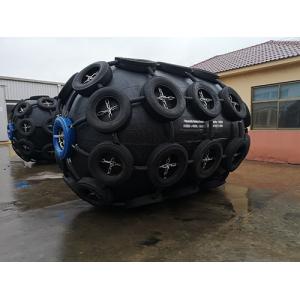
Add to Cart
Two types of floating pneumatic fenders and pneumatic rubber fenders for truck tires and aircraft tires
Large size floating pneumatic fender transportation mode:
Large pneumatic rubber fenders often encounter the problem that the container is too wide or too high to be transported. In fact, we can release the gas from Yokohama pneumatic fenders and then fold them. In this way, neither the container nor the trailer will refuse to be transported or increase the transportation cost due to the excessive width and height. However, the ship fenders manufacturers also need experience and can't release the gas blindly gas.
What should be paid attention to in the selection of floating pneumatic fender
1. First, dock according to the tonnage, type and working environment of the ship;
2. When choosing the pneumatic rubber fender, we should also consider the tonnage of the ship's boom and the maximum arm length,
The weight and diameter of the boom shall not be higher than the tonnage and maximum boom length of the ship.
3. The pneumatic rubber fender can be divided into sheathed type and portable type, depending on which kind of marine fender is suitable for the ship's working environment.
4. According to the different diameter of pneumatic rubber fender, the number of cord layers is different.
Introduction of floating pneumatic fender:
Floating pneumatic fender is a kind of ship equipment for berthing, buffering and protection. Floating pneumatic fender is more practical and economical than general marine fender, so it is widely popular.
Yokohama fender is a rubber sealed container made of rubber cloth as the skeleton material. The pneumatic rubber fender can float on the water surface after being filled with compressed air. It is an important buffer medium for ship to ship berthing and ship to wharf berthing. At the same time, the inflatable rubber fender can absorb the impact energy of ship motion, reduce the ship's recoil force, and greatly improve the safety of ship docking.
It uses air as the medium and uses compressed air to absorb the impact energy to make the ship flexible when berthing, so as to achieve the effect of anti-collision and avoidance. Yokohama fender has been widely used in oil tankers, container ships, engineering ships, ocean fishing boats, offshore platforms, large docks, military ports, large piers and other ships and offshore platforms.
Performance table of floating fender:
| SIZE | Initial pressure is 80 kPa Compression deformation 60% | ||
| Diameter(mm) | Length (mm) | Reactionforce-kn | Energyabsorb kn-m |
| 500 | 1000 | 87 | 9 |
| 600 | 1000 | 100 | 10 |
| 700 | 1500 | 182 | 28 |
| 1000 | 1500 | 241 | 40 |
| 1000 | 2000 | 340 | 54 |
| 1200 | 2000 | 392 | 69 |
| 1350 | 2500 | 563 | 100 |
| 1500 | 3000 | 763 | 174 |
| 1700 | 3000 | 842 | 192 |
| 2000 | 3500 | 1152 | 334 |
| 2000 | 4000 | 1591 | 386 |
| 2500 | 4000 | 1817 | 700 |
| 2500 | 5500 | 2655 | 882 |
| 3000 | 5000 | 2715 | 1080 |
| 3000 | 6000 | 3107 | 1311 |
| 3300 | 4500 | 2478 | 1642 |
| 3300 | 6000 | 3654 | 2340 |
| 3300 | 6500 | 3963 | 2534 |
Case study of floating pneumatic fender



